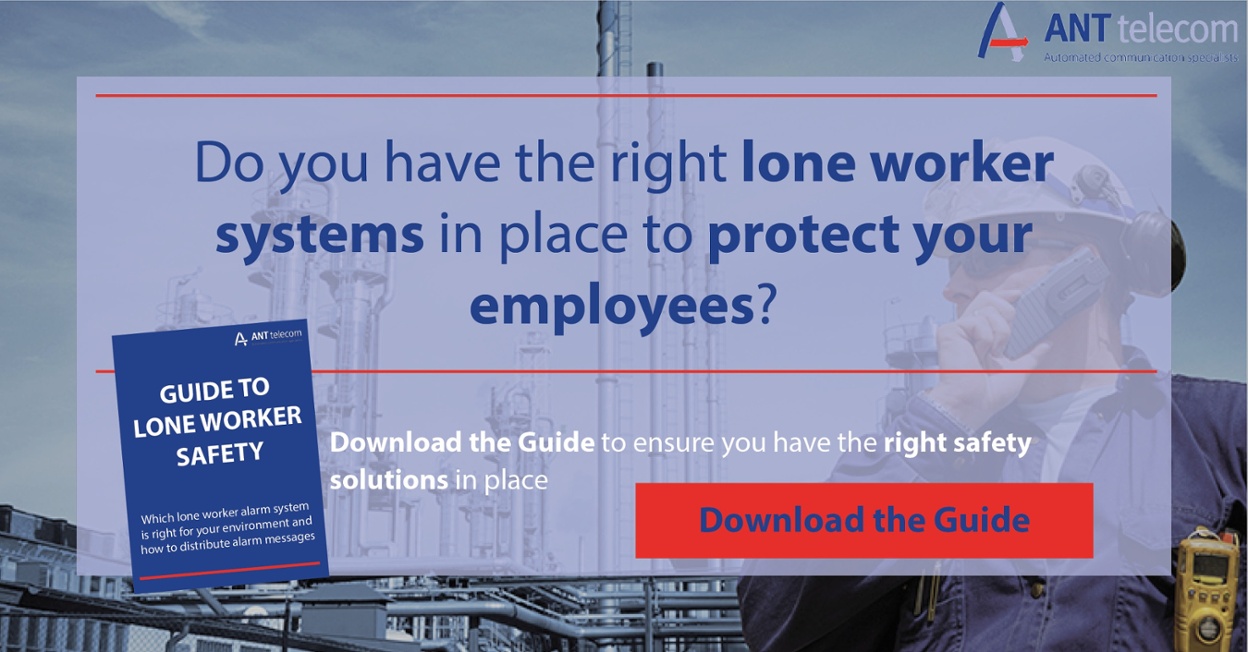
When it comes to managing the health and safety of a workforce, finding the best solution for the protection of lone workers can be difficult. Whether lone workers only make up a minority of the workforce, they still must be given the same consideration as other employees, and in some cases, more. Recognising the difficulties that a lone worker faces in their day-to-day tasks can help to determine what the best method of protection is. Many employers use check calls to monitor their lone worker forces, but there are many disadvantages to this. Health and safety managers should not only want the best protection for their workers but should also be aware of ways to get more for their money when it comes to lone worker protection.
Are Check Calls Right for your Business?
Making sensible decisions is a key part of health and safety management, but often a decision can seem sensible when the person making it is unaware of alternative solutions. Check calls can be appropriate for some industries where minimal risk is apparent. However, for most lone workers, check calls can present a number of issues. When a person is working alone, there is a lot more to consider when it comes to assessing risks. For example, if an employee is working in an area where debris or falling stock of any kind may be present, a check call may not be the best monitoring solution. Any work environment where an employee may be knocked unconscious, whether it be by falling stock, machinery, or another person (Such as an intruder, or service user), can benefit from more contemporary monitoring solutions. If an individual is working in a hazardous environment without supervision or the assistance of others, check calls are unlikely to be the best solution.
Check Calls - A Lengthy and Costly Monitoring Solution
Check calls can present many issues in the event of an emergency, the main issue being response time. The amount of time taken to respond to an emergency can be the difference between life and death for those working in hazardous environments. The effectiveness of check calls is questionable when the process is dissected and analysed:
Dissecting the Check Call Process
A manager must make the call to the worker, this step itself can come with several negative outcomes. For example, the manager may get side-tracked and forget to make the phone call, the worker may be busy and unable to take a call, or they may be in an area where phone signal is poor or non-existent. The first step relies on the manager successfully making the call and communicating with the worker, and the safety of the worker is reliant solely on this first step. In addition to the possible setbacks mentioned, the manager is also relying on the worker being conscious or in a fit state to take the call.
Additional Concerns
Check calls are often made periodically, as managers can be responsible for large teams of lone workers. This means that there is the possibility that one worker may be missed if a manager gets distracted following a list of numbers to call. The problem here is that, should something happen to the lone worker, you can no longer demonstrate that you have a compliant process in place to protect staff. This leaves you open to the possibilities of fines.
Secondly, when you have a manual process for timed check-calls with your lone workers, they’re vulnerable for the entire time between check-calls. If the check-in interval is an hour or two hours that is an awfully long time to be left on your own, perhaps incapacitated, with no-one close to you, in a hard-to-find location behind machinery or up in a gantry. Manual processes increase the potential for a more delayed response in an emergency. The impact is on the lone worker in trouble, and it can be the difference between a relatively swift recovery and a far gloomier outcome.
Increased Costs
It may seem absurd, but you’re increasing your costs by doing the minimum. By involving managers or security to make calls, monitor and record lone worker safety on a regular basis – is almost a full-time role. There are much more cost effective – and much more efficient, more watertight and more responsive ways of providing this level of protection, ways that are a small fraction of the cost of a full member of staff.
What if you don’t want to get rid of the person you’ve assigned to fulfil this role that can be done better by an automated solution? Then you should still factor in the ‘opportunity cost’ of not deploying that person in a role where they can actually contribute and do something much more meaningful to the business that enhances the top line, rather than drains the bottom line.
Using an Automated Safety solution to Protect Lone Workers
Adopting an automated solution to protect lone workers is a far more cost-effective, time efficient and reliable method of monitoring staff. The devices can contain tilt sensors that can detect when a worker may be unconscious. This means that the device will raise an alert as soon as the emergency happens, saving precious time and giving the worker the best possible chances of a quick recovery. Devices are also equipped with a panic button that can be pressed in any other emergency. And when an alarm is triggered, alerts are automatically distributed to a response team that can deal with the incident and ensure the lone worker receives assistance as quickly as possible. Alerts contain important information including the name of the person that trigger the alert and their location making it far easier to find them in an emergency. All alarms must be acknowledged and ‘closed down’ once the lone worker has been found. Reminders are triggered automatically to the response team if this criterion hasn’t been met within a pre-determined timeframe. These extra steps in the process ensures that alarms aren’t missed and lone workers in need of urgent medical attention aren’t left waiting for team hasn’t seen the call for help.
To complete the solution, all events are logged and recorded within the system and can be reviewed at any time. This not only helps you to test, review and refine the lone worker process but also helps you to demonstrate to the HSE what process you have implemented and how your team responded to a lone worker in distress.





